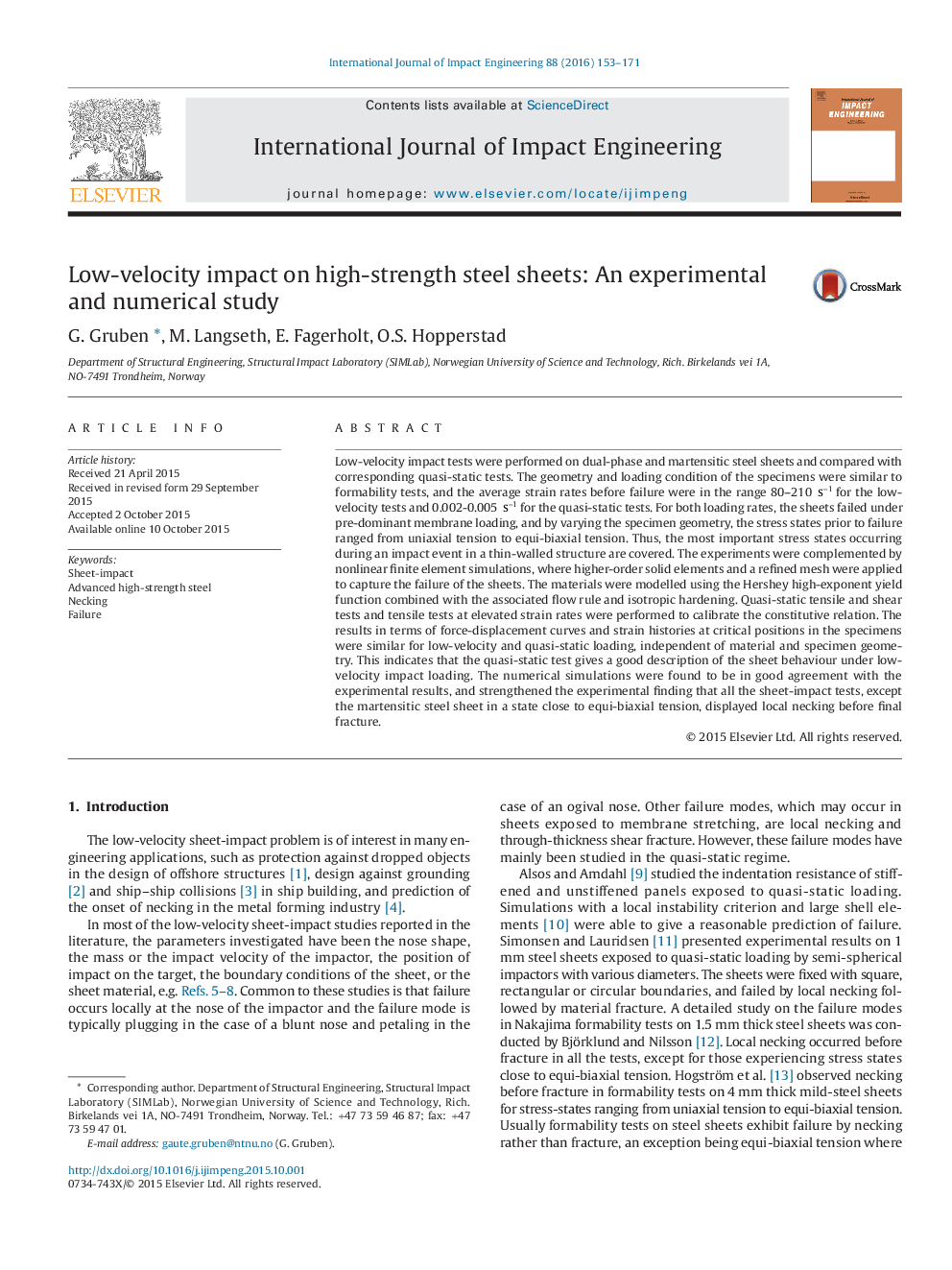| Article ID | Journal | Published Year | Pages | File Type |
|---|---|---|---|---|
| 779131 | International Journal of Impact Engineering | 2016 | 19 Pages |
•Low-velocity and quasi-static punch tests have been carried out on two types of steel.•Stress-states from uniaxial tension to equi-biaxial tension are covered.•The quasi-static test describes well the sheet behaviour under low-velocity loading.•The simulated force-displacement curves and strain histories agree with experiments.•Most of the tests fail due to local necking.
Low-velocity impact tests were performed on dual-phase and martensitic steel sheets and compared with corresponding quasi-static tests. The geometry and loading condition of the specimens were similar to formability tests, and the average strain rates before failure were in the range 80–210 s−1s−1 for the low-velocity tests and 0.002-0.005 s−1s−1 for the quasi-static tests. For both loading rates, the sheets failed under pre-dominant membrane loading, and by varying the specimen geometry, the stress states prior to failure ranged from uniaxial tension to equi-biaxial tension. Thus, the most important stress states occurring during an impact event in a thin-walled structure are covered. The experiments were complemented by nonlinear finite element simulations, where higher-order solid elements and a refined mesh were applied to capture the failure of the sheets. The materials were modelled using the Hershey high-exponent yield function combined with the associated flow rule and isotropic hardening. Quasi-static tensile and shear tests and tensile tests at elevated strain rates were performed to calibrate the constitutive relation. The results in terms of force-displacement curves and strain histories at critical positions in the specimens were similar for low-velocity and quasi-static loading, independent of material and specimen geometry. This indicates that the quasi-static test gives a good description of the sheet behaviour under low-velocity impact loading. The numerical simulations were found to be in good agreement with the experimental results, and strengthened the experimental finding that all the sheet-impact tests, except the martensitic steel sheet in a state close to equi-biaxial tension, displayed local necking before final fracture.
